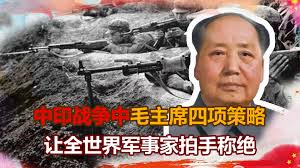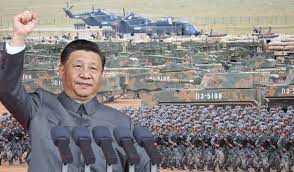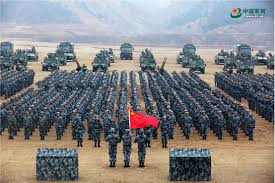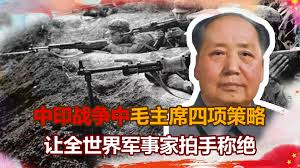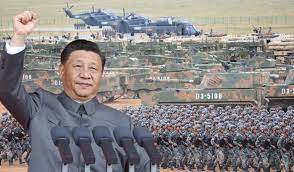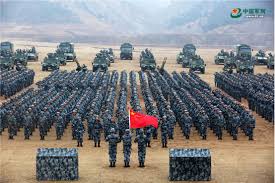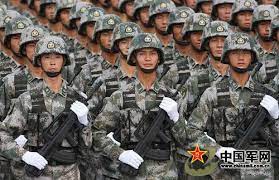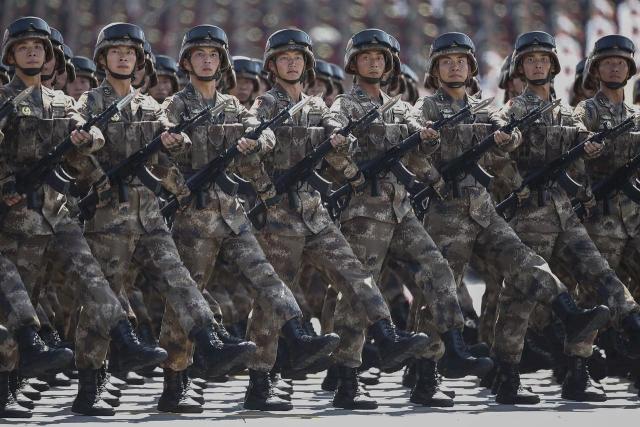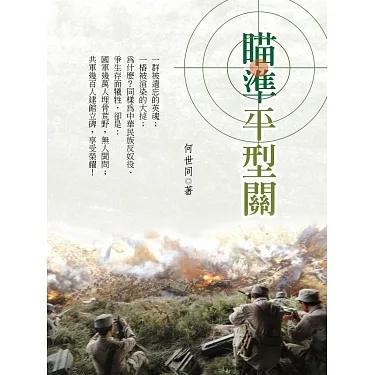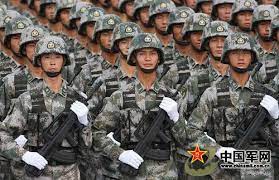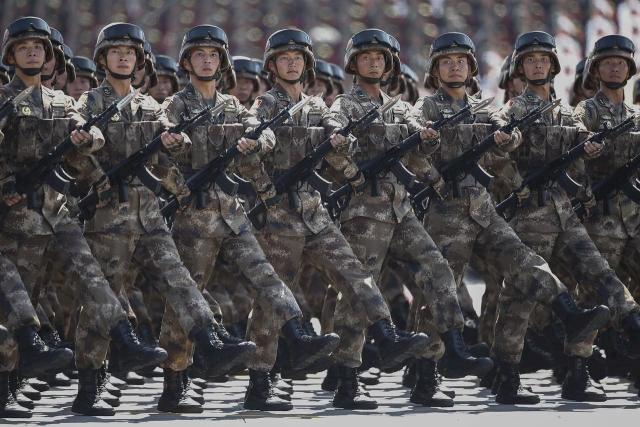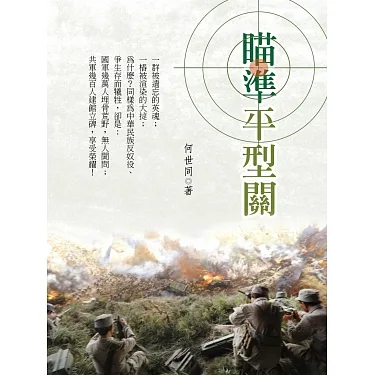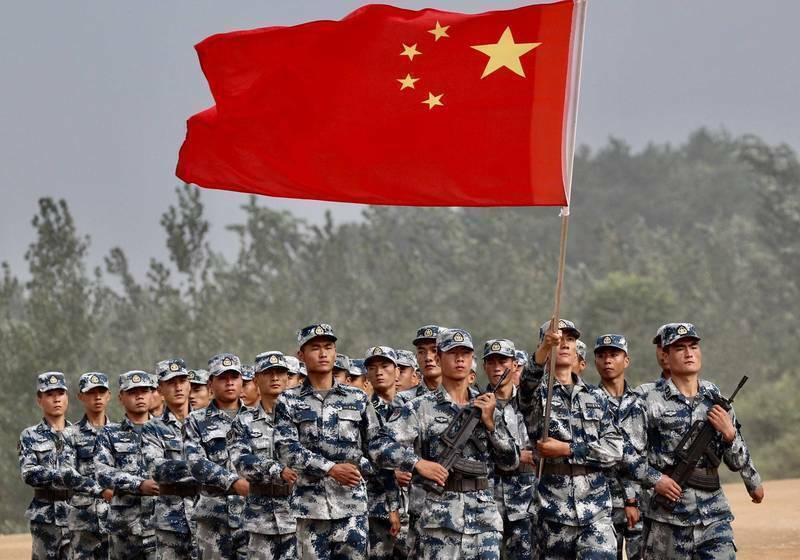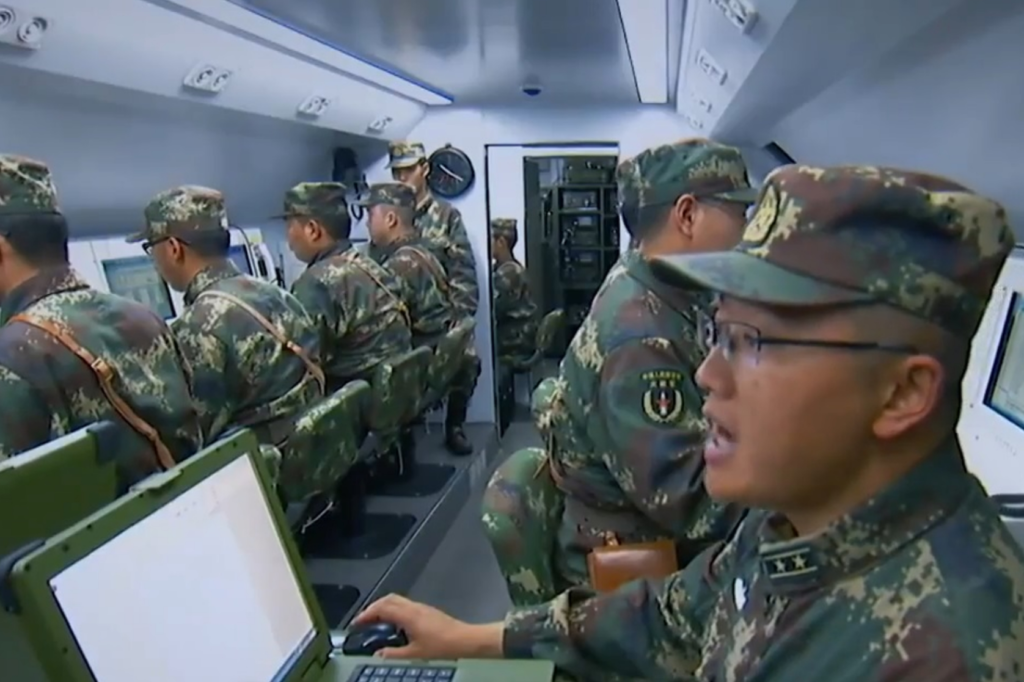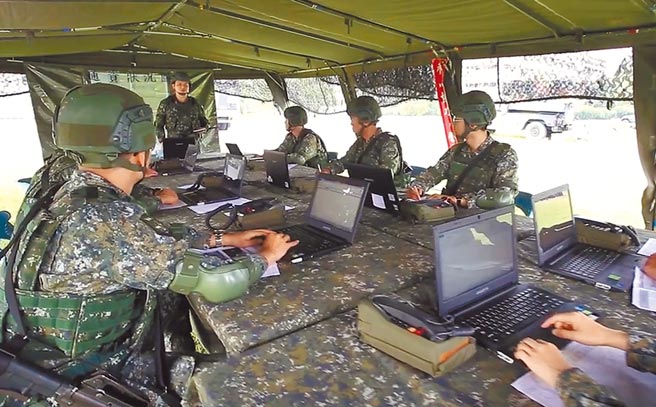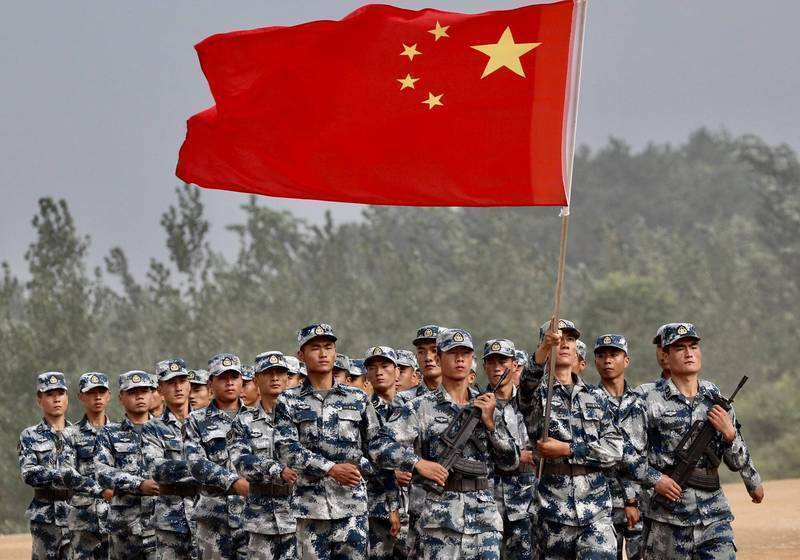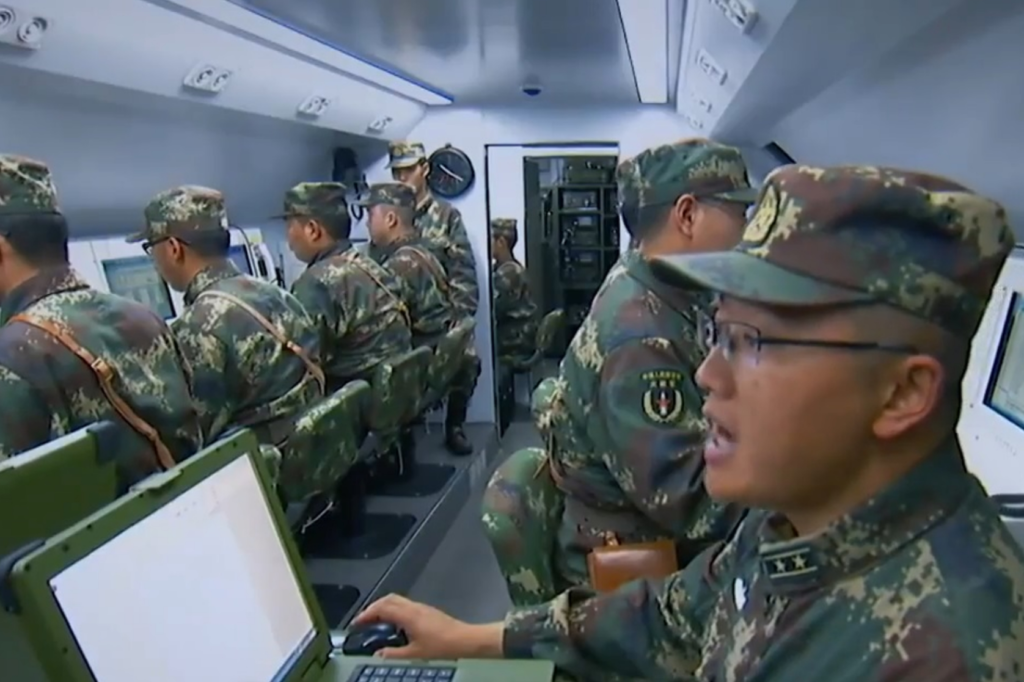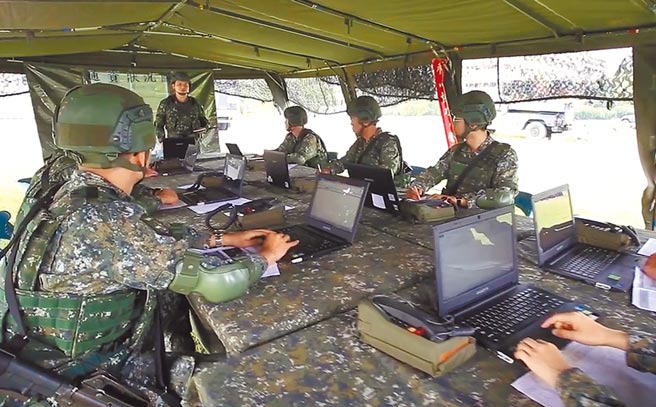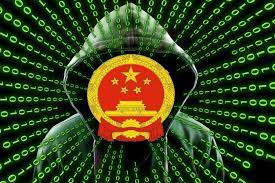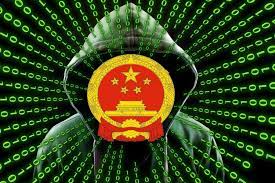Chinese Military Analysis of Developing Intelligent Command Information Systems
資料來源:解放軍報 作者:李建平 紀鳳珠 李琳 責任編輯:王鳳 2022-08-09 12:OO
外文音譯:
Introduction
The era of intelligent warfare has begun. Command information systems with intelligent characteristics will become the “central nerve” of future intelligent combat command and the supporting means for intelligent combat command and control. Accelerating the construction of intelligent command information systems is an inherent requirement for the development of military intelligence. Only by clarifying the essentials of the development of intelligent command information systems, grasping the key points of research and development of intelligent command information systems, and exploring the key points of the development of intelligent command information systems can we better develop Promote the construction and development process of intelligent command information systems and win the opportunity to win future intelligent operations.
Clarify the essentials of the development of intelligent command information systems
Intelligent command information systems are an inevitable choice for the development of information-based and intelligent warfare. They are the inevitable result of the development of the scientific and technological revolution, and are also the demands of the times for the development of military intelligence. Clarifying the essence of the development of intelligent command information systems will help to grasp the direction of the construction of intelligent command information systems and establish long-term goals for system development.
Promote the intelligent evolution of warfare. In future intelligent operations, the battlefield situation will change rapidly and the battlefield environment will be complex and harsh. If you want to take the initiative on the battlefield, “intellectual power” will become the new commanding heights, and intelligent command information systems will undoubtedly be an important support for future combat command and operations. Its intelligent development can promote the evolution of warfare into intelligence, and is an important basis for intelligent warfare to gain the upper hand and seek victory.
Support intelligent innovation of combat concepts. Future intelligent operations require corresponding combat command concepts, and the intelligent command information system is an important basis for the practical application of combat command concepts and the soil for the innovation and development of intelligent combat command concepts. New concepts of intelligent combat command such as human-machine hybrid command grouping, data-driven command activities, open development command model, and intelligent concentrated command process are all inseparable from the support of intelligent command information system. Intelligent command information system will serve as a human The extension of the brain breaks through the physiological limits of the human body and realizes the organic integration of combat command art and intelligent technology.
Promote intelligent transformation of combat methods. The widespread application of artificial intelligence technology in the military field has caused major changes in the mechanism of combat victory. Intelligence surpasses firepower and information power and has become the primary factor in determining the outcome of a war. The construction and development of intelligent command information systems will promote the transformation of combat methods to intelligence, making the combat methods transform from the “combat network + precision guided weapons” in the information age to the “intelligent Internet of Things + manned/unmanned combat platforms” in the intelligent age. The combat style has accordingly evolved from “network-centric warfare” to “cognition-centric warfare”.
Seize the key points of research and development of intelligent command information system
The command information system is a product of the era of informationized warfare. With the rapid development of military intelligence and the research and practical application of intelligent combat winning mechanisms, the intelligent upgrade and construction of the command information system is urgent. The key points of functional research and development should be highlighted to create a new intelligent command information system.
“Super brain” assisted decision-making. In future intelligent operations, the amount of battlefield information data will be huge and complex. Commanders will easily fall into the “information ocean” during the command process, leading to information confusion and affecting command decisions. With the emergence of intelligent auxiliary decision-making technology and “cloud brain” and “digital consultants”, a new decision-making model based on “human brain + artificial intelligence” collaboration is quietly taking shape. The intelligent command information system will break through the limits of human intelligence, serve as an extension of the human brain, assist commanders in their work, and develop war decision-making from pure human brain decision-making to super-brain command decision-making of “human brain + artificial intelligence”.
“Full-dimensional” situational awareness. In future intelligent operations, the space will be multi-dimensional, the forces will be diverse, the styles will be diverse, and the pace will accelerate. Comprehensive and flexible grasp of the battlefield situation will become the basis for commanders’ decision-making. Multi-domain integration, intelligent and dynamic presentation of the full-dimensional battlefield situation will become the construction and development of command information systems. Necessary requirement. The command information system’s perception, understanding, fusion and prediction of battlefield situations such as target identification, threat level estimation, combat action prediction and future battle situation prediction are expanding from land, sea, air, space, electromagnetic, network and other spaces. to the cognitive domain and social domain to achieve “full-dimensional” situational awareness.
“Intelligent” network communication. In the future, intelligent operations will use a large number of intelligent command and control platforms and intelligent weapon platforms, and the connection between command and control platforms and weapon platforms must be intelligent information communication systems. Like the nerves and blood vessels of the human body, intelligent information and communication systems play a linking and lubricating role in intelligent operations. Therefore, it is necessary to establish a full-dimensional coverage, uninterrupted intelligent information network to support the connectivity and control of intelligent equipment, and form intelligent optimization of network structure, intelligent reorganization of network invulnerability, and intelligent anti-interference capabilities to ensure intelligent collaboration between platforms Combat and exert the best overall combat effectiveness.
“Unmanned” autonomous collaboration. In recent local conflicts around the world, drones have been widely used and played an important role in determining the direction of the war, which has attracted widespread attention from all parties. Unmanned weapons and equipment are the material basis for intelligent warfare, and have formed subversive combat styles, such as intrusive lone wolf operations, manned/unmanned coordinated system attack operations, unmanned system formation independent operations, and unmanned aerial vehicles. Swarm combat, etc. Although unmanned combat is led by humans, machines are given a certain degree of autonomous action authority in the background, thereby enabling machines to perform unmanned combat operations on the front line. However, the unmanned combat battlefield is changing rapidly, and the destruction of human-machine collaboration will become the norm. The command and control system of the unmanned intelligent equipment platform must be smarter and be able to conduct autonomous coordinated operations according to the combat purpose.
“Active” information defense. Intelligent operations will inevitably face all-dimensional and diverse information attacks from powerful enemies. The level of information security protection capabilities directly affects the outcome of the battle for “intelligence control” on the battlefield, and is a key link in the construction of intelligent command information systems. Therefore, we should take the initiative to actively formulate and improve network protection strategies, enrich intrusion detection capabilities and authentication identification methods, strengthen the application of high-tech information security, strengthen the anti-interference and anti-intervention capabilities of various wireless transmission methods, and build and strengthen intelligent traceability response. control capabilities to effectively contain information attacks.
Explore the key points for the development of intelligent command information systems
The development of intelligent command information systems is not only a technological innovation, but also requires further emancipation of minds and updating of concepts. To promote the development of intelligent command information systems, we must change the traditional thinking of adding hardware, building a large “network”, and collecting and storing various types of data. We must break through the inherent hierarchical settings and create an open and service-oriented system to target the needs of intelligent combat command and operations. , explore and study the key points for the development of intelligent command information systems.
Innovative ideas. Adhere to the guidance of innovative thinking concepts, learn from the development ideas of intelligent command information systems of military powers, and explore a development path with its own characteristics based on actual needs. It is necessary to break the traditional “chimney building” approach, adhere to the top-level design and overall planning of the command information system, unify interfaces, protocols and standards, and form an open and sustainable system architecture layout; adhere to the system research and development ideas that combine research, construction and application, and formulate Develop strategies for different stages in the near, medium and long term to standardize the development direction of system construction; adhere to iterative upgrades, optimization and improvement strategies, and continuously improve the intelligence level of command and control, intelligence reconnaissance, communications, information countermeasures and comprehensive support to ensure intelligence The command information system continues to develop healthily.
Concentration is the key. Focusing on the key capabilities of the intelligent command information system is an important basis for intelligent warfare to gather superior intelligence and win with intelligence, and is the key to obtaining “victory power” for intelligent warfare. Algorithms, computing power, and data are not only the intrinsic driving force and support for the development of artificial intelligence, but also the core capability requirements and advantages of intelligent command information systems. The development of intelligent command information systems must adhere to algorithm innovation research to improve the system’s cognitive advantages, speed advantages and decision-making advantages; accelerate the research and development of next-generation computers represented by quantum computers to provide stronger computing power support for intelligent command information systems; Deeply explore the value of deeper and wider dimensions of information in massive combat data resources to seek opportunities for victory.
Gather wisdom to tackle key problems. The construction and development of intelligent command information systems is one of the main projects of military intelligence. It is a multi-domain, multi-disciplinary, multi-department and multi-unit participation project of great integration and linkage. The construction and development of intelligent command information systems must adhere to the spirit of teamwork, collective wisdom, and pioneering innovation, and target strategic and forward-looking fields such as sensors, quantum information, network communications, integrated circuits, key software, big data, artificial intelligence, and blockchain. Adhere to the promotion of high and new technologies and the demand for intelligent combat, carry out in-depth research and exchanges in multiple fields, multiple levels, and multiple forms, and continue to make breakthroughs, innovations, and iterative upgrades to make the intelligent command information system more complete and smarter.
Collaborative development. To further promote the construction and development of intelligent command information systems, we must fully absorb local advanced technological achievements and integrate into the current trend of world artificial intelligence innovation and development. At present, the world’s artificial intelligence technology is developing vigorously, accumulating strong development momentum and technological advantages. The application of artificial intelligence technology is highly versatile and has broad prospects for the transformation and application of technological achievements. It is an important way to realize the construction and development of intelligent command information systems. It is necessary to study and formulate general technical standards, tear down barriers, break ice, smooth military-civilian cooperation, and achieve shared linkage of technological achievements. It is necessary to cultivate and shape new types of military talents through collaborative training, so that they can continuously adapt to the needs of various positions under intelligent conditions and give full play to the effectiveness of intelligent command information systems.
繁體中文:
介紹
智慧戰爭時代已經開始。 具有智慧化特徵的指揮資訊系統將成為未來智慧化作戰指揮的「中樞神經」和智慧化作戰指揮控制的支撐手段。 加快智慧指揮資訊系統建置是軍事情報發展的內在需求。 只有明確智慧指揮資訊系統發展的要義,抓住智慧指揮資訊系統的研發重點,探索智慧指揮資訊系統的發展要點,才能更好地發展,推動智慧指揮資訊系統的建構與發展。指揮資訊系統智慧化進程,贏得未來智能化作戰的先機。
明確智慧指揮資訊系統發展要領
智慧指揮資訊系統是資訊化、智慧化戰爭發展的必然選擇。 它們是科技革命發展的必然結果,也是時代對軍事情報發展的要求。 明確智慧指揮資訊系統發展的本質,有助於掌握智慧指揮資訊系統的建構方向,確立系統發展的長遠目標。
推動戰爭智能化演進。 未來智慧化作戰中,戰場局勢瞬息萬變,戰場環境複雜惡劣。 想要在戰場上佔據主動,「智力」將成為新的製高點,而智慧指揮資訊系統無疑將成為未來作戰指揮與作戰的重要支撐。 其智慧化發展可以推動戰爭朝向智慧化演進,是智慧化戰爭佔上風、取得勝利的重要基礎。
支持作戰理念智能化創新。 未來智慧化作戰需要相應的作戰指揮理念,而智慧指揮資訊系統是作戰指揮理念實際應用的重要基礎,也是智慧化作戰指揮理念創新發展的土壤。 人機混合指揮編組、資料驅動指揮活動、開放式開發指揮模型、智慧化集中指揮流程等智慧化作戰指揮新理念,都離不開智慧指揮資訊系統的支撐。 智慧指揮資訊系統將作為人類大腦的延伸,突破人體的生理極限,實現作戰指揮藝術與智慧技術的有機融合。
推動作戰方式智能化變革。 人工智慧技術在軍事領域的廣泛應用,引發了戰鬥勝利機制的重大變化。 情報超越火力、資訊力,成為決定戰爭勝負的首要因素。 智慧指揮資訊系統的建構和發展將推動作戰方式向智慧化轉變,使作戰方式從資訊時代的「作戰網路+精確制導武器」轉變為「智慧物聯網+有人/無人作戰」。智慧時代的「平台」。 作戰方式也相應地從「網路中心戰」演變為「認知中心戰」。
把握智慧指揮資訊系統研發重點
指揮資訊系統是資訊化戰爭時代的產物。 隨著軍事智慧化的快速發展以及智慧化作戰制勝機制的研究和實際應用,指揮資訊系統的智慧化升級和建設刻不容緩。 突顯功能研發重點,打造新型智慧指揮資訊系統。
“超級大腦”輔助決策。 未來智慧化作戰中,戰場資訊資料量將龐大且複雜。 指揮官在指揮過程中很容易陷入“資訊海洋”,導致資訊混亂,影響指揮決策。 隨著智慧輔助決策技術以及「雲端大腦」、「數位顧問」的出現,基於「人腦+人工智慧」協同的新型決策模式正在悄悄形成。 智慧指揮資訊系統將突破人類智力的極限,作為人腦的延伸,輔助指揮的工作,發展戰爭決策
從純人腦決策到「人腦+人工智慧」的超腦指揮決策。
「全維度」態勢感知。 未來的智慧化作戰,空間將是多維的,力量將是多元化的,風格將是多樣化的,步伐將加快。 全面、靈活地掌握戰場情勢將成為指揮官決策的依據。 多域融合、全維度戰場態勢智慧化、動態呈現將成為指揮資訊系統的建構與發展。 必要的要求。 指揮資訊系統對目標識別、威脅等級估計、作戰行動預測、未來戰勢預測等戰場態勢的感知、理解、融合和預測正在從陸、海、空、太空、電磁、網路等空間拓展。 向認知域和社交域實現「全維度」的態勢感知。
「智慧型」網路通訊。 未來智慧化作戰將大量使用智慧指揮控制平台和智慧武器平台,指揮控制平台和武器平台之間的連接必須是智慧資訊通訊系統。 智慧資訊與通訊系統就像人體的神經、血管一樣,在智慧運作中發揮連結與潤滑作用。 因此,需要建立全維度覆蓋、不間斷的智慧資訊網絡,支撐智慧設備的連接與控制,形成網絡結構智慧最佳化、網絡抗毀性智慧重組、智慧抗干擾能力,保障智慧設備的智慧化。平台之間協同作戰,發揮最佳的整體戰鬥力。
「無人」自主協作。 在近期世界各地的局部衝突中,無人機已廣泛應用,並在決定戰爭走向方面發揮了重要作用,引起各方廣泛關注。 無人武器裝備是智慧戰爭的物質基礎,已形成侵入性獨狼作戰、有人/無人協同系統攻擊作戰、無人系統編隊獨立作戰、無人機等顛覆性作戰方式。 群體作戰等。雖然無人作戰是由人類主導,但在後台賦予機器一定程度的自主行動權限,從而使機器能夠在前線進行無人作戰行動。 然而,無人作戰戰場瞬息萬變,人機協作的破壞將成為常態。 無人智能裝備平台的指揮控制系統必須更智能,能夠根據作戰目的進行自主協調作戰。
“主動”訊息防禦。 智慧作戰必然面臨強大敵人全方位、多樣化的資訊攻擊。 資安防護能力的高低,直接影響戰場「智控」爭奪戰的勝負,是智慧指揮資訊系統建構的關鍵環節。 因此,我們應主動出擊,積極制定和完善網路防護策略,豐富入侵偵測能力和認證識別手段,加強資訊安全高新技術的應用,加強各種無線傳輸方式的抗干擾和防介入能力。 ,建構和強化智慧追溯響應。 控制能力,有效遏止資訊攻擊。
探討智慧指揮資訊系統發展重點
智慧指揮資訊系統的發展不僅是技術創新,更需要進一步解放思想、更新觀念。 推動智慧指揮資訊系統發展,必須改變傳統的增加硬體、建構大「網路」、採集和儲存各類數據的思維。 我們要突破固有的層級設置,針對智慧化作戰指揮與作戰需求,打造開放式、服務化的體系。 ,探索研究智慧指揮資訊系統發展的關鍵點。
創新的想法。 堅持創新思維理念引領,借鏡軍事強國智慧指揮資訊系統發展思路,立足實際需求,探索出一條具有自身特色的發展道路。 要打破傳統的「煙囪式建築」做法,堅持
對指揮資訊系統進行頂層設計與總體規劃,統一介面、協定與標準,形成開放、永續的系統架構佈局; 堅持研究、建置、應用結合的系統研發思路,制定近、中、長期不同階段的發展策略,規範系統建設的發展方向; 堅持迭代升級、優化改進策略,不斷提高指揮控制、情報偵察、通訊、資訊對抗和綜合保障等智慧化水平,確保情報指揮資訊系統持續健康發展。
專注是關鍵。 聚焦智慧指揮資訊系統關鍵能力,是智慧戰爭匯集優勢情報、以智取勝的重要基礎,是獲得智慧戰爭「制勝動力」的關鍵。 演算法、算力、數據不僅是人工智慧發展的內在驅動力和支撐,也是智慧指揮資訊系統的核心能力需求和優勢。 智慧指揮資訊系統的發展必須堅持演算法創新研究,提高系統的認知優勢、速度優勢和決策優勢; 加速以量子電腦為代表的下一代電腦研發,為智慧指揮資訊系統提供更強算力支撐。 深入挖掘海量作戰資料資源中更深層、更廣維度的資訊價值,尋求制勝先機。
集思廣益,攻堅克難。 智慧指揮資訊系統的建置與發展是軍事情報的重大工程之一。 它是一個多領域、多學科、多部門、多單位共同參與、高度整合、連結的工程。 智慧指揮資訊系統建置發展必須堅持團隊協作、集體智慧、開拓創新的精神,瞄準感測器、量子資訊、網路通訊、積體電路、關鍵軟體、大數據等策略性、前瞻性領域、人工智慧和區塊鏈。 堅持高新技術推廣與智慧化作戰需求,多領域、多層次、多形式深入進行研究交流,不斷突破、創新、迭代升級,使智慧化指揮資訊系統更加完善、更有智慧。
協同開發。 進一步推動智慧指揮資訊系統建設發展,必須充分吸收本土先進技術成果,融入當前世界人工智慧創新發展趨勢。 目前,世界人工智慧技術蓬勃發展,累積了強勁的發展動力和技術優勢。 人工智慧技術應用通用性強,技術成果轉化應用前景廣闊。 是實現智慧指揮資訊系統建置與發展的重要途徑。 要研究制定通用技術標準,破除壁壘、破冰,暢通軍民合作,實現技術成果共享連動。 要透過協同訓練培養塑造新型軍事人才,使其不斷適應智慧化條件下各崗位需求,充分發揮智慧指揮資訊系統的效能。
中國國防部資源: http://www.mod.gov.cn/gfbw/jmsd/4917888.html
